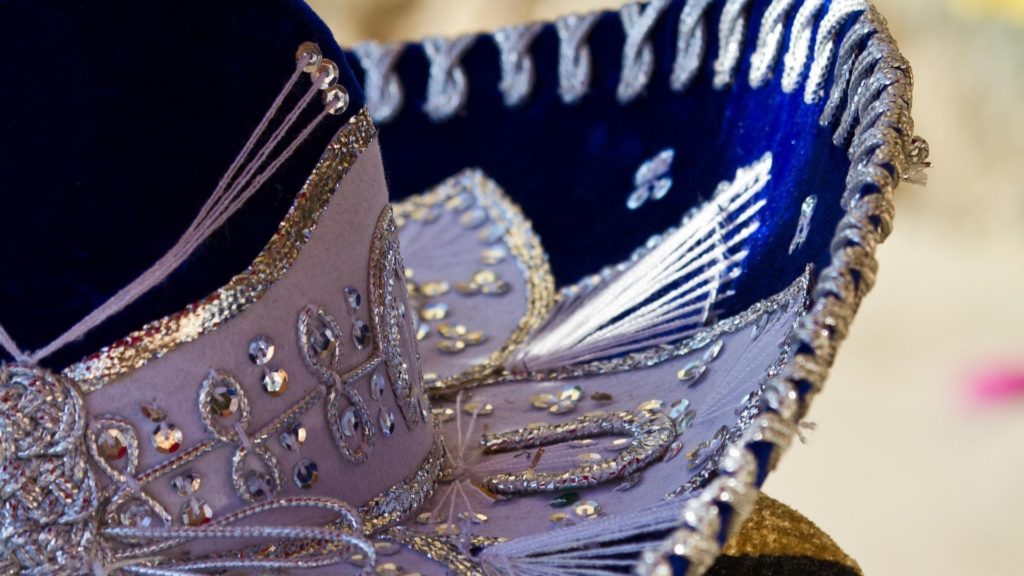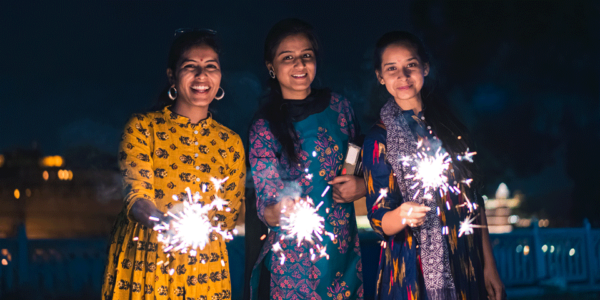Key sales days such as Black Friday dominate in people’s minds, but there are plenty of other global shopping holidays for ecommerce brands to boost sales throughout the year.
While the period from Black Friday and Cyber Monday all the way to Christmas tends to be the busiest time for ecommerce brands, there are plenty of other global shopping holidays throughout the year and around the world that brands can take advantage of to run sales and create excitement.
Here are 25 global shopping holidays for ecommerce brands to consider when planning strategy for the year:
January
Blue Monday
Proclaimed the ‘saddest day of the year’ after all the overindulgence of Christmas and the wearing off of New Year’s resolutions, Blue Monday falls on the third Monday of the month. It has been appropriated by brands as a day to run sales on and help incite some ‘retail therapy’.
February
Chinese New Year
Chinese New Year is the first day of the year for the Chinese lunar calendar and is also known as the Lunar New Year. It usually falls in late January or early February. It is a huge celebration lasting for approximately 15 days. Lunar New Year is not only celebrated in China but also its neighboring countries such as Singapore, Indonesia, Malaysia, Myanmar, Thailand, Cambodia, the Philippines and Mauritius as well as North America and Europe. In 2019, spending for Chinese New Year reached 1005 billion Yuan (approximately US$146 billion.)
Valentine’s Day

Valentine’s Day is celebrated in many countries and it’s a profitable holiday for ecommerce brands with Americans alone spending roughly US$20.7 billion on gifts in 2019 and US$27.4 billion in 2020, an increase of 32%. As only 9% of men and 7% of women buy their gifts at online retailers there’s a huge opportunity for ecommerce brands to increase their portion of the pie.
Defender of the Fatherland Day– Russia
This is a public holiday in Russia with it being unofficially considered a ‘Men’s Day’ as military service is obligatory for men. Women tend to give presents and postcards to the men in their lives on the day and parades are organized throughout the country. Popular presents include vacations, money, fishing equipment, books, and smartphones or other gadgets.
March
International Women’s Day
Held on March 8th most countries celebrate International Women’s Day. Russia and Poland in particular spending a high percentage on presents, with the majority of respondents in Russia planning on spending over 3000 rubles (approximately US$40). Many retailers use the day to run promotions, discounts and marketing campaigns on women-specific products.
St Patrick’s Day
A national holiday in Ireland, but also widely celebrated worldwide, St Patrick’s Day spending reached approximately US$6.6 billion in the US in 2019, up from US$5.9 billion in 2018.
Easter
Celebrated in most of the Western world, Easter spending in the US reaches around US$17 billion dollars per year with food, clothing, gifts, candy, flowers and decorations the most popular categories. In the UK, spending reached £4 billion in 2016 (approximately US$5.3 billion), with approximately £713 million spent on gifts.
Mother’s Day (Ireland/UK/Australia)
Mother’s Day is celebrated on two different dates depending on where in the world you are. This which gives brands twice as much opportunity to run sales and increase conversions. The UK, Ireland and Australia celebrate in March. The US and Canada recognise the holiday in May. Australians spend approximately AUD$1.3 billion (approximately US$950 million) on Mother’s day. British people spent £1.4 billion (approximately US$1.8 billion) in 2017, with £260 million (approximately US$346.4 million) on flowers alone.
White Day (Japan, South Korea and Taiwan)
Approximately 30 years ago, Japanese confectionary makers created a holiday for men to gift marshmallows to their wives and girlfriends as a symbol of gratitude – and to boost marshmallow sales. The day has since developed to anything white (white chocolate, jewellery, lingerie, flowers) and spread to other countries such as South Korea and Taiwan.
April
Eid
Eid is the holiday that marks the end of Ramadan and celebrated by Muslims all over the world. Traditional gifts for Eid include clothes and jewelry, food, dates and toys.
May
Hot Sale (Mexico)

Hot Sale is another big weekend in Mexico. It happens around the last weekend in May or first weekend in June depending on how the year falls – similar to Black Friday or El Buen Fin the actual date isn’t set. Sales in 2020 reached 20.16 billion Mexican pesos (approximately US$922 million) and there was a 58% increase in new buyers.
Mother’s Day (US/Canada)
Mother’s Day in North America is a big deal with expenditure in the US reaching $26.7 billion in 2020 up from US$14 billion in 2010. Popular gifts include jewellery, electronics, gift cards, and clothing and accessories. Spending on flowers alone was approximately US$2.56 billion in the US in 2020.
Cinco De Mayo (US/Mexico)
Celebrated in the US since 1860 and evolving over time to become a celebration of Mexican culture and pride, Cinco De Mayo is an important holiday there, primarily focusing on Mexican food and drinks. Sales of tortilla chips alone reached US$98 million in 2016.
June
Father’s Day
Father’s Day is celebrated in many countries. The total spend is steadily increasing with US$17 billion spent in the US in 2020. Brazil spent 3.5 billion reals (approximately US$646 million) in 2020 for online alone. In the UK spending went down slightly in 2019 from 2018 at £653 million from £695.2 million (approximately US$926.3 million).
July
Independence Day (US)
Independence Day is the 4th July in the US. It is a huge celebration with a public holiday and national festivities throughout the weekend. Spend for food alone in the US was US$6.52 billion in 2020.
August/September
Back to School
While going back to school isn’t a holiday as such, it’s a good time for brands to run sales. Many people stock up on necessities associated with going back to school or university including new clothes, shoes or trainers and more. In the UK, the average spend per child on going back to school necessities was £191 (approximately US$254) each. Shoppers mainly spent on clothes, shoes and accessories such as lunch boxes and water bottles.
October
Diwali (India)
Diwali falls in October or November each year. The month before is India’s busiest shopping period with spend in 2019 reaching US$3.8 billion (a 51% spend increase) and accounting for approximately 35% -40% of the annual sales of ecommerce. Other countries celebrate the holiday too with Diwali accounting for 2.1% of respondents’ spend in the UK.
Halloween

Halloween is a global shopping holiday as many countries celebrate. But it is particularly popular in the US. In 2019, Halloween spending reached US$9 billion. The UK spends approximately £140 million (approximately US186.5 million) on Halloween food, £99 million (approximately US$131.8 million) on Halloween decorations, and £166 million (approximately US$221 million) on Halloween clothing.
World Teacher’s Day
Established by UNESCO in 1984, many countries celebrate Teacher’s Day. Gifts to teachers often include stationery, tote bags, and personalized items such as coffee mugs or tea towels.
November
El Buen Fin – Mexico
El Buen Fin is Mexico’s answer to Black Friday and a really popular holiday there – with spending to match. Similar to Black Friday the date is different from year to year. But the event generally occurs two weeks before Black Friday on the weekend before Mexican Revolution Day. In 2019, online retail sales revenue generated amounted to 10.9 billion Mexican pesos (approximately US$495 million). That was an increase of nearly 58 percent in comparison to the previous year.
White Friday (Middle East)
As Friday is a holy day and black as a colour is generally associated with sadness or tragedy the Middle East created White Friday in 2014. It also takes place at the end of November. Countries that participate in White Friday include Saudi Arabia, Kuwait, and the United Arab Emirates, Oman, Bahrain, Qatar, and Egypt.
Dia de los Muertos (Mexico)
Dia de los Muertos is traditionally celebrated in Mexico. But it is also popular in Latin America and regions with a Latino population. It is a two day festival where people celebrate the dead with gifts for altars, food, drinks, parties and activities that the dead enjoyed in life.
Click Frenzy (Australia)
Click Frenzy is an Australian version of Cyber Monday. It started in 2012 and occurs twice a year in November and May. There was a 103% increase in June 2020 from May and November 2019. In fact, partners saw 47% growth during Click Frenzy compared to the previous week.
Singles Day
Singles’ Day is a global shopping holiday created by online marketplace Alibaba. The marketplace created it as a counter to Valentine’s Day. Since it’s inception, the holiday has taken off in popularity with sales reaching US$38 billion over 200,000 and 78 countries. In Singapore, sales rose 67% in 2019 compared to 2017/18.
December
Green Monday
Green Monday is an online retail term originally coined by eBay for the day considered the best sales day in December with sales reaching US$1.621 billion in 2016 and the second-biggest day for online holiday shopping.
Conclusion
There are many global shopping holidays that cross-border ecommerce brands can tailor their discounts or sales strategies to. Brands can then market sale events and increase sales throughout slower periods during the year.
Learn how ESW can help your brand expand into new markets and leverage global shopping holidays. Contact our team of experts.





